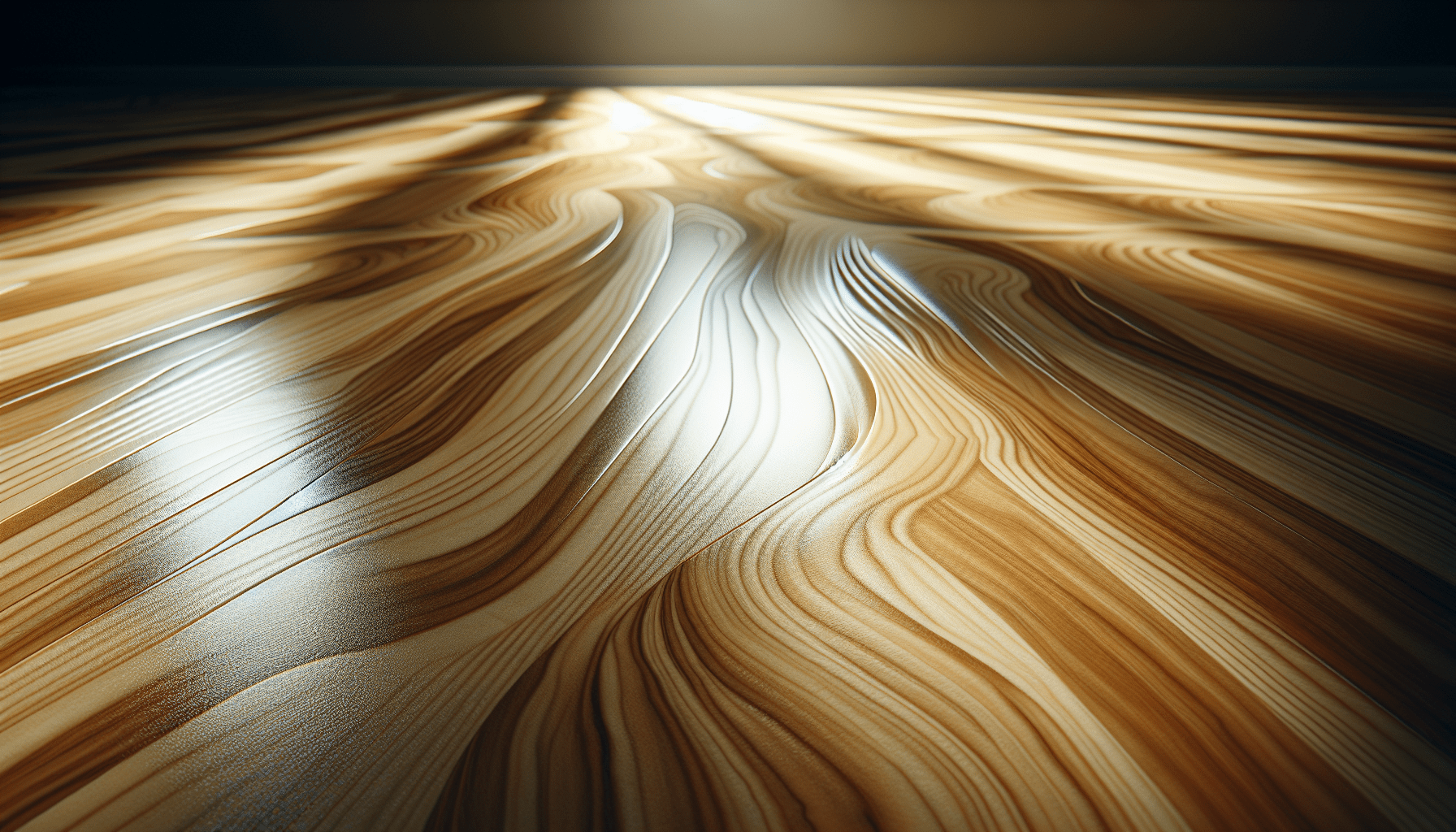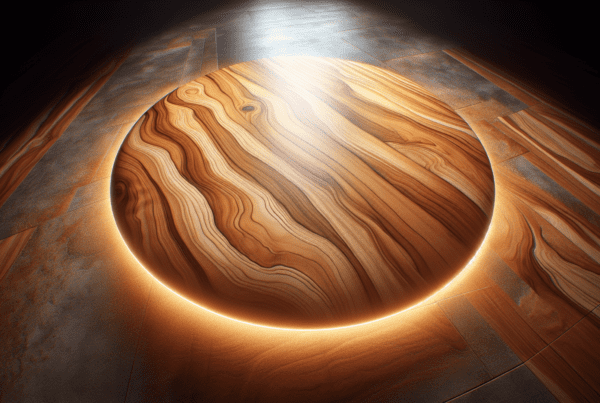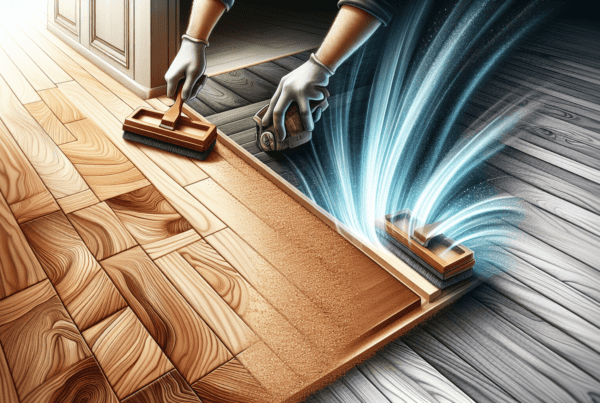In the heart of Wellington, a unique beauty comes to life under the skilled hands of experts when it comes to bespoke timber floor sanding and finishing. It’s a process where attention to detail and craftsmanship meet, ensuring every plank of wood tells its own rich, enduring story. Our goal is always to breathe new life into each floor, transforming homes and spaces into warm, inviting environments that speak volumes of timeless elegance. From the initial sanding down to the final finish, every step is a testament to the love for the craft and the desire to achieve perfection. Join us as we explore the artistry behind creating these stunning, durable timber floors that promise to be the highlight of any Wellington home.
Understanding the Basics of Timber Floor Sanding
Definition and importance of timber floor sanding
When we talk about timber floor sanding, we’re referring to the process that revives and enhances the natural beauty of wood floors. It’s not simply about aesthetics, though; sanding is crucial for maintaining the health and longevity of our floors. By removing the top layers of dirt, old finishes, and minor imperfections, sanding prepares the timber for a fresh finish that will protect it for years to come. For us, understanding this fundamental aspect is the first step toward a revived flooring that practically glows with warmth and character.
The process: From coarse to fine sanding
The sanding process is more of an art form than it may initially appear. We start with coarse-grit sandpaper, moving our way through to finer grits. This step-by-step transition is essential for achieving a smooth, flawless finish. The initial, coarser grits take care of any deep scratches and the previous finish, while the finer grits polish the timber, leaving it silky smooth. This meticulous progression ensures our timber floors are perfectly prepared for whatever finish we envision.
Types of equipment used for sanding timber floors
In our toolkit for achieving the perfect finish, several key pieces of equipment play pivotal roles. Drum sanders, for instance, tackle the bulk of the work, efficiently sanding large areas. Edge sanders then come into play, reaching those spots right up against walls and in corners that drum sanders can’t. For the final touches, we often turn to orbital sanders, which smooth out any remaining imperfections. Each piece of equipment has its unique role, ensuring that every inch of our timber floors is impeccably sanded.
The Art of Finishing Timber Floors
Overview of timber floor finishing
Following the thorough sanding of our floors, applying the finish is the next critical step. Finishing not only amplifies the beauty of the timber, bringing out its natural grain and color, but it also serves as a shield against wear, tear, and spills. This final layer dictates the overall vibe of the room, from glossy and sophisticated to matte and understated, offering both protection and style.
Types of finishes: Lacquer, oil, and others
When choosing our finish, we have several options at our disposal, each with its merits. Lacquer finishes, for example, create a hard, durable surface that’s easy to clean, making them ideal for high-traffic areas. Oil finishes, on the other hand, penetrate deep into the wood, enhancing its natural beauty and offering a more natural look that’s easy to touch up. Waxes and varnishes are other options, each providing a different aesthetic and level of protection. Our choice depends on our lifestyle, the type of wood, and the look we’re after.
Choosing the right finish for your timber floor
Deciding on the right finish for our timber floor requires careful consideration of several factors. We must think about the room’s usage, the type of timber, and our preferred maintenance level. Additionally, the finish we choose influences the ambiance of the space—do we want a glossy surface that reflects light or a matte finish for a softer feel? It’s about balancing practicality with aesthetics to find the perfect match for our homes and our lives.
Preparation Steps for Sanding and Finishing
Clearing and cleaning the area
Before we begin the sanding and finishing process, preparing the workspace is crucial. This means removing all furniture and fittings from the area, providing a clear, unobstructed surface to work on. Cleaning the floor to remove dust, dirt, and debris is also essential, ensuring that nothing interferes with the sanding equipment or the eventual finish.
Inspecting the timber floor for damages
A thorough inspection of the timber floor is next on our list. We’re on the lookout for any signs of damage, such as deep scratches, dents, or loose boards, that need addressing before we start sanding. Identifying these issues early on allows us to carry out the necessary repairs, ensuring a smooth, even surface ready for finishing.
Necessary repairs before sanding
Any damages we identify during our inspection need fixing to guarantee the best possible outcome. This might include replacing or fixing loose boards, filling in deep scratches or gouges, and addressing any moisture-related issues. Ensuring our timber floor is in the best condition before sanding not only makes the process smoother but also contributes to the longevity and durability of the finished floor.
Bespoke Timber Floor Designs in Wellington
Popular timber floor designs in Wellington
Wellington homes are known for their character and charm, and timber floor designs play a significant role in this. From traditional wide plank floors that evoke a sense of history to more contemporary, patterned designs like herringbone or chevron, our choices are vast. These designs can dramatically alter the appearance of our rooms, making the floor a central element of our home’s design.
Customization options for unique homes
For those of us seeking something truly unique, the customization options for timber floors are almost endless. We can choose from a variety of wood species, each with its unique grain patterns and colors, and can even request custom stains or finishes to match our desired aesthetic. This level of customization allows us to create floors that are perfectly tailored to our homes and lifestyles.
Integrating traditional and modern designs
One of the joys of working with timber floors is the flexibility to blend styles, integrating traditional and modern design elements. For example, we might choose a classic wood species but lay it in a contemporary pattern, or vice versa. This blending of styles allows us to create spaces that are both timeless and on-trend, reflecting our personal tastes and the architectural character of our Wellington homes.
The Environmental Aspect of Timber Flooring
Sustainability in timber sourcing
As we make choices about our timber floors, sustainability is an ever-present concern. We’re committed to choosing wood sourced from responsibly managed forests, ensuring our floors are not only beautiful but also environmentally friendly. This commitment extends to supporting local suppliers who share our dedication to sustainability, reducing transportation emissions and bolstering our local economy.
Eco-friendly finishes and their benefits
In addition to sustainable wood sourcing, we’re also mindful of the finishes we use. Eco-friendly finishes, free from harmful chemicals and volatile organic compounds (VOCs), are a priority. These finishes not only contribute to a healthier living environment by improving indoor air quality but also have a lesser impact on the ecosystem. It’s a win-win for us and the planet.
Wellington’s stance on green building practices
Wellington’s dedication to green building practices is something we’re incredibly proud of. Policies and guidelines encourage the use of sustainable materials and methods, including timber flooring choices. Our community’s commitment to these practices strengthens our resolve to make environmentally responsible decisions in our homes, contributing to a healthier, more sustainable city.
Cost Considerations and Budgeting
Average costs for sanding and finishing in Wellington
The cost of sanding and finishing timber floors in Wellington can vary widely, depending on several factors. On average, we might expect to pay anywhere from $30 to $60 per square meter, though this can fluctuate based on the size of the area, the type of timber, and the chosen finish. Understanding these costs upfront helps us plan and budget accordingly.
Factors affecting the cost
Several factors influence the cost of our timber floor projects. The condition of the floors, requiring more extensive repairs or preparation, can add to the cost, as can the choice of finish. High-end, eco-friendly finishes might come with a higher price tag but offer benefits that are worth the investment. The complexity of the design and the accessibility of the area being sanded and finished also play a role in determining the final cost.
Tips for budgeting your timber floor project
Budgeting for our timber floor sanding and finishing project requires a realistic assessment of all potential costs. We recommend getting detailed quotes from several service providers, taking the time to understand what’s included. Allocating a contingency fund for unexpected repairs or changes in the project scope can also help prevent financial surprises. Planning and researching can make our timber floor project a success, both aesthetically and financially.
Timber Floor Maintenance and Care
Daily and weekly maintenance routines
Maintaining our timber floors is key to preserving their beauty and extending their lifespan. Simple routines, like sweeping or vacuuming daily to remove dust and debris, can significantly impact. Weekly cleaning with a damp mop and a cleaner specifically designed for timber floors will keep them looking their best while avoiding water or harsh chemicals that could damage the finish.
Professional care and when it’s needed
While regular home maintenance is essential, occasionally, our floors might require professional care—especially if they’re heavily trafficked or show signs of wear. Professional deep cleaning, re-sanding, or re-finishing can rejuvenate our floors, bringing back their original charm. Recognizing when it’s time to call in the professionals can save us from more extensive repairs down the line.
Long-term preservation of your timber floor
Aside from routine cleaning and occasional professional care, several practices can help preserve our timber floors long-term. Using rugs in high-traffic areas, maintaining a stable indoor humidity level, and avoiding sharp heels or furniture without protective pads can all contribute to our floors’ longevity. Thoughtful use and attention to these details ensure our timber floors remain a beautiful part of our homes for years to come.
Choosing the Right Service Provider
What to look for in a timber floor specialist
When it comes to sanding and finishing our timber floors, choosing the right service provider is crucial. A reputable specialist should have extensive experience with different types of timber and finishes, as well as a portfolio of their work. We look for providers who come highly recommended by past clients and who offer clear, detailed quotes. Open communication about the process and what to expect is also vital.
Questions to ask before hiring
Before we commit to a service provider, we have several important questions to ask. These include their experience with projects similar to ours, the types of products and equipment they use, and their process for addressing unexpected issues or damages during the project. Inquiring about warranties or guarantees on their work can also provide peace of mind.
Wellington’s reputable timber floor services
Wellington is fortunate to have several reputable timber floor specialists capable of bringing our flooring visions to life. Many of these providers are well-versed in the unique aspects of Wellington homes and the latest trends in timber flooring. Seeking out these experienced professionals guarantees a smoother process and a finished floor that meets or exceeds our expectations.
Innovative Techniques in Sanding and Finishing
Latest advancements in equipment and materials
The world of timber floor sanding and finishing is constantly evolving, with new advancements in equipment and materials enhancing the process. Dust-free sanding techniques, for example, now minimize the mess and health hazards associated with traditional sanding. Additionally, the development of more durable, eco-friendly finishes offers us both beauty and sustainability, meeting our modern needs.
Benefits of dust-free sanding techniques
Dust-free sanding techniques have revolutionized how we approach timber floor renovation projects. By significantly reducing airborne dust, these techniques not only create a healthier environment but also allow for a cleaner work area, which can result in a superior finish. For us, this means less cleanup and disruption, making the renovation process smoother and more enjoyable.
Emerging trends in timber floor finishing
As we look to the future, emerging trends in timber floor finishing reflect our growing desire for durability and sustainability. Ultra-matte finishes, for instance, are gaining popularity for their soft, natural look, while hardwearing finishes that require minimal maintenance are increasingly in demand. Eco-friendly, non-toxic finishes continue to gain traction, aligning with our environmental values without compromising on quality or aesthetics.
Conclusion: The Future of Timber Flooring in Wellington
Predictions for upcoming trends in design and material
The future of timber flooring in Wellington looks promising, with sustainability and customization at the forefront. We anticipate a continued emphasis on eco-friendly materials and practices, along with a growing demand for bespoke designs that reflect individual styles and needs. The integration of technology in both materials and installation methods will further enhance the durability and appeal of timber flooring, making it a timeless choice for Wellington homes.
The growing importance of sustainability in flooring choices
Sustainability has become a key consideration in our flooring choices, a trend that’s set to continue and expand. The emphasis on sourcing ethically produced, renewable materials is stronger than ever, inspiring us to make choices that not only look good but also do good for the planet. This conscientious approach is redefining the flooring industry, with timber flooring leading the way in eco-friendly home design solutions.
Final thoughts on bespoke timber floor sanding & finishing
In conclusion, our journey towards bespoke timber floor sanding and finishing in Wellington is filled with opportunities to create spaces that are both beautiful and sustainable. By understanding the basics, choosing the right finishes, preparing adequately, and engaging with the right professionals, we can transform our floors into stunning features of our homes. As we look forward, embracing innovative techniques and prioritizing ecological considerations will ensure that our timber floors remain a cherished option for Wellington homeowners for years to come.







